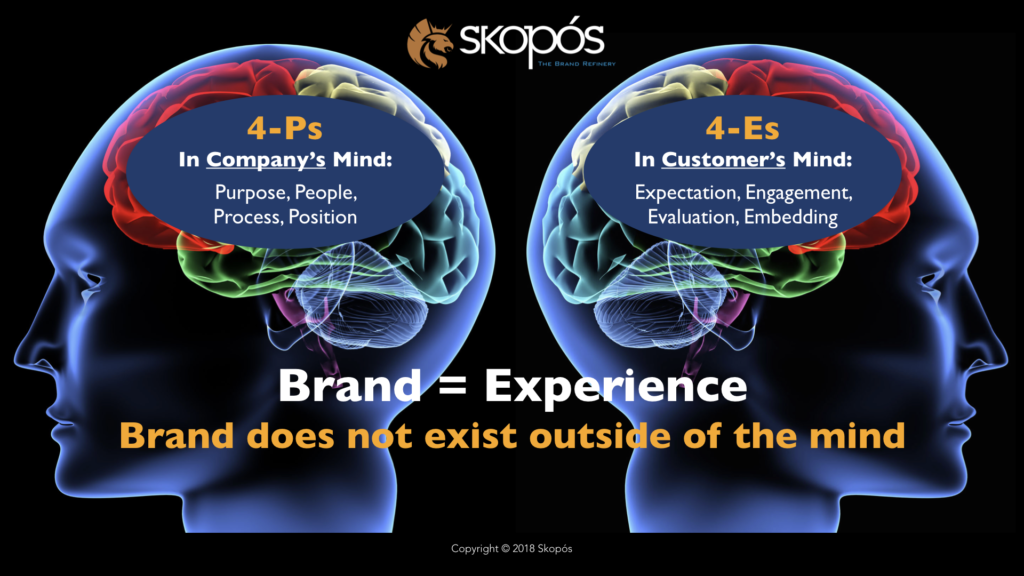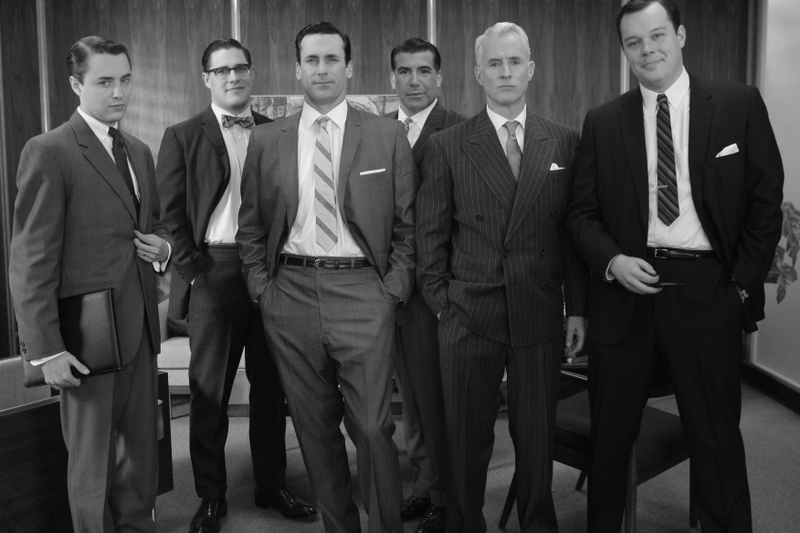Most marketers are familiar with the classic 4P’s of taking a product or service to market: Product, Place, Price, and Promotion. These were developed in the mid-1960s during the glory days of Mad Men and advertising-driven marketing. Markets have changed, the understanding of effective marketing has changed, and as we’ve noted before, the consumer is back where he/she belongs – in the driver’s seat. This is why we use our own set of 4-P’s. And ours comes with a set of 4-E’s at no extra charge. In fact, let’s start with those.
The most important concept that many business owners and marketers fail to grasp is that a brand is not a thing. Thus our disdain for the use of the word “branding” as it suggests that someone is creating something or putting a mark on something as one does with livestock. “Brand” is not a thing. Brand is the experience – anticipated, lived, and remembered – of engaging with your company, product, and/or service. It does not exist outside of the mind. Logos, websites, jingles, etc. help communicate what you hope that experience (brand) will be but they are not “the brand.”
Brand is built by business owners and the people they surround themselves with from the inside-out. We call it BrandDNA. Brand is not built by an ad agency from the outside-in.
So what are the 4-E’s?: Expectation, Engagement, Evaluation, Embedding. Let’s use a restaurant as an example. Let’s say a friend is raving about a new place that just opened up. Maybe you heard an ad for it or read a review. You decide to check it out. This is not a blind date. You have formed an expectation of a positive dining experience based on what you have read and heard. You arrive at the restaurant. Your mind is now processing every sensory input and emotion against that expectation. It’s like a meter that goes back and forth between exceeding expectations and not meeting expectations. So while you are experiencing the food, service, decor, lighting, temperature, sounds, smells, comfort or lack thereof, your mind is keeping score and evaluating. When the experience is over, it forms an opinion and files it away. The restaurant and you create a brand in your mind that will impact any future decision to engage with the restaurant again. Or post an online review. And if a future visit happens the brand evolves based on those subsequent encounters.
So while 4-E’s exist in the consumer’s mind, the new 4-P’s exist in the company’s collective mind and are what promise and deliver the brand/experience. The new 4-P’s are Purpose, People, Process, and Position in that order.
We start with Purpose (aka skopós). Why does your business exist? What do you do that provides a superior benefit and improves the lives of your target group? Next comes People. Jim Collins in Good to Great said, “First who, then what.” Get the right people in the right seats. These are people who share your passion for the purpose. When this is accomplished, it’s like an Olympic rowing team. Everyone is rowing in the same direction toward a common goal and knows his or her role. Next is Process. The secret sauce. The combination of product, service, and delivery that is the expression of your purpose and people. This is your BrandDNA and if done well, is special. Finally comes Position. This is simply telling the story of the first three. How will engaging with your Purpose, People, and Process make my life better? And if you’ve done a good job with the first three P’s, the last P is much easier and requires less effort, expense, and few if any gimmicks or discounts.
Business in 2024 is much different than the mid-1960s. In some respects, it more resembles 1924 when innovation and reputation were the hallmarks of great brands. Those who fail to understand what real brand is and is not, do so at their own peril.
Does your business have a defined purpose? Is it the same as when it was founded? Do your people know what it is and are they aligned with it? Can they explain your “secret sauce” and tell your story? This is your BrandDNA and is where your brand starts. If you’re not there yet, we can help.
When your customers embrace and can tell your story as well as you can, they likely will and you have built a great brand. Until then, you are an expendable commodity.


